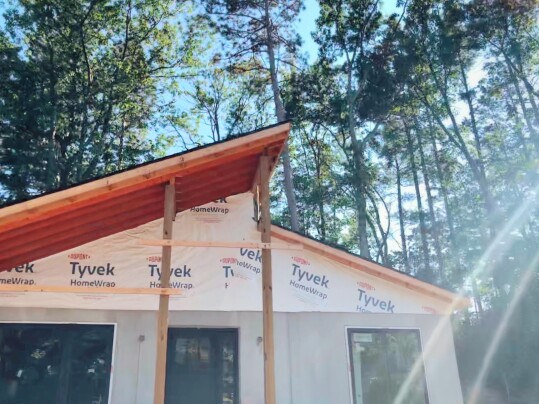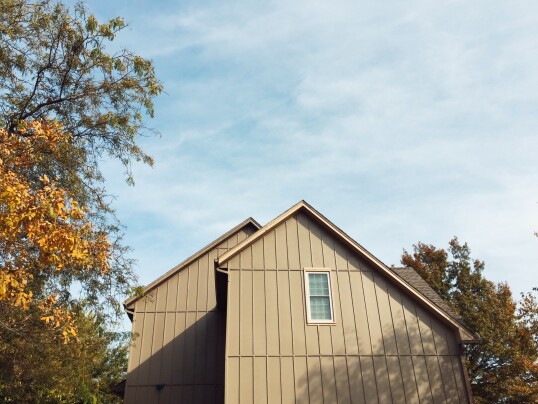Home builders had a good summer. With fewer existing homes for sale, the new home market was hot. But as summer faded into fall, it began to cool. That’s why new numbers from the U.S. Census Bureau and the Department of Housing and Urban Development come as a welcome surprise. The data shows the number of housing starts rose 7 percent in September, with a 3.2 percent month-over-month increase in the number of single-family homes that began construction. That’s good news for buyers, as additional for-sale inventory helps moderate home price increases. Robert Dietz, NAHB’s chief economist, says the housing market’s inventory issue continues to help builders. “Despite ongoing challenges in the market, the housing deficit of resale inventory continues to provide some market support for builders,” Dietz said. “Because of a lack of existing homes in the marketplace, 31 percent of homes available for sale in August were new construction. This compares with a historical average in the 12-14 percent range.” (source)
Archive for October 2023
New Home Construction Rises Unexpectedly
Weekly Survey Finds Mortgage Rates Up Again
According to the Mortgage Bankers Association’s Weekly Applications Survey, average mortgage rates moved higher last week for 30-year fixed-rate loans with conforming loan balances. Rates were also up for 15-year fixed-rate loans and 5/1 ARMs, though jumbo loans and loans backed by the Federal Housing Administration saw declines. It was the sixth consecutive weekly increase for the 30-year fixed rate. Joel Kan, MBA’s vice president and deputy chief economist, says higher rates slowed demand last week. “Both purchase and refinance applications declined, driven by larger drops for conventional applications,” Kan said. “Purchase applications were 21 percent lower than the same week last year, as home buying activity continues to pull back given reduced purchasing power from higher rates and the ongoing lack of available inventory.” The MBA’s weekly survey has been conducted since 1990 and covers 75 percent of all retail residential mortgage applications. (source)
Market Forecast Sees Little Change Into 2024
Each month, Fannie Mae’s Economic and Strategic Research Group releases a forecast of what they believe is ahead for the housing market and overall economy. The group covers topics from economic growth to home sales and predicts what will happen in coming months. According to their October release, the group sees little change ahead for the housing market as it heads into 2024. They expect home prices to remain resilient, while sales continue to slow due to higher mortgage rates and fewer homes for sale. In other words, little change from today’s dynamic. Doug Duncan, Fannie Mae’s senior vice president and chief economist, says activity remains dampened. “In many ways, the housing market experienced four years of business in a two-year period between mid-2020 and mid-2022,” Duncan said. “With ongoing affordability constraints and rising mortgage rates, much of that activity has essentially been given back.” (source)
Who Is Today’s Typical Home Buyer?
More than 10 million households have recently purchased and moved into a new home, according to a new study from the National Association of Home Builders. The study – which looks at data from the American Housing Survey in hopes of determining who today’s typical buyer is and what type of home they buy – breaks down buyers based on age, income, down payments, and home purchased. So who is today’s typical home buyer? Well, the study found recent home buyers had a median age of 41 and a household income of $97,700. First-time buyers, on the other hand, were closer to 33 and made less money than move-up buyers. Among all buyers, more than half put less than 20 percent down on the house they purchased and the vast majority bought detached single-family homes – with 6.9 percent buying a single-family attached homes and 2 percent purchasing condos. The median value of homes purchased was $318,185 for all buyers and $271,445 for first-time buyers. (source)
Home Values Show Signs Of Calming
If you’re thinking about making a move, you’re likely thinking about home values. Whether they’re up or down will have an impact on the decisions you make, whether you’re a buyer, a seller, or both. So where are they now? Well, according to one recent analysis, values were relatively flat in September from the month before. In fact, they were down just 0.1 percent nationally. That’s slower than they’ve been at any point since February but not that far off normal. In fact, between 2015 and 2019, monthly home-price increases were between 0.1 and 0.4 percent, making September’s results fairly typical compared to pre-pandemic growth. Year-over-year, home values were up 2 percent, pushing the typical home value to $350,000 nationally. Overall, September’s data shows the market began to calm as the summer season came to a close. That could be encouraging news for fall buyers hoping for a break from challenging affordability conditions. (source)
Getting A Mortgage Got Easier In September
For most home buyers, applying for a mortgage is step one. You aren’t going to get very far in the home buying process without first confirming that you’ll be able to get a loan. But while your financial stability, income, and history has a lot to do with whether you’re ultimately approved to borrow, those aren’t the only determining factors. Mortgage credit availability is another. Put simply, lending standards aren’t fixed. There are times when it’s easier to get a mortgage and times when it’s more difficult. That’s why the Mortgage Bankers Association keeps a monthly measure of whether standards are tightening or loosening. It’s a useful look at what prospective borrowers can expect when applying for a loan. According to the MBA’s most recent Mortgage Credit Availability Index, credit loosened in September, making it a little easier on borrowers. Joel Kan, MBA’s vice president and deputy chief economist, says lenders are offering more options to buyers facing elevated rates. “Credit availability increased slightly in September, as lenders increased their loan offerings marginally to meet the changing needs of borrowers who are facing higher mortgage rates,” Kan said. “There were more loan programs for ARM loans for borrowers seeking lower initial monthly payments and also some increases in non-QM product offerings.” (source)
Adjustable Rate Mortgages See Spike In Popularity
According to the Mortgage Bankers Association’s Weekly Applications survey, average mortgage rates were up last week for 30-year fixed rate loans with both conforming and jumbo balances, loans backed by the Federal Housing Administration, and 15-year fixed-rate loans. But while rates for most loan categories increased, rates for adjustable rate mortgages saw a significant decline from the week before. Joel Kan, MBA’s vice president and deputy chief economist, says interest in ARMs spiked as a result. “The level of ARM applications increased by 15 percent over the week, bringing the ARM share up to 9.2 percent of all applications, the highest share since November 2022,” Kan said. “The yield curve has become less inverted in recent weeks and ARM pricing has certainly improved.” That improvement helped push overall mortgage application demand higher week-over-week, including a 1 percent increase in demand for loans to buy homes. The MBA’s weekly survey has been conducted since 1990 and covers 75 percent of all retail residential mortgage applications. (source)







